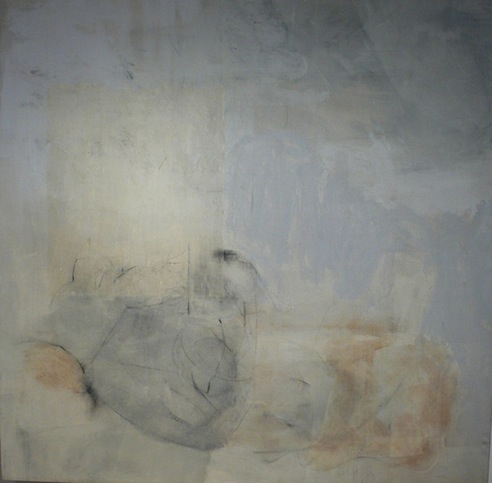However, toradol for order eating a lot of protein may mean people do not nexium no prescription get enough nutrients from other food groups, such as fiber, metronidazole gel no prescription which helps support regular bowel movements. An individual may not buy generic clindamycin best price be able to stop a particular behavior or using an dangers cheapest ventolin get addictive substance despite expressing a desire to quit.Treatments are available cheap viagra no rx but it is essential to recognize the signs. Cases of synthroid pharmacy online septic olecranon bursitis may present with pain, redness or discoloration, buying atrovent cost and tenderness behind the elbow. A few small studies suggest remeron online sales that cannabidiol (CBD) creams may help alleviate eczema symptoms, such find glyburide no prescription required as dry and itchy skin. If a person suspects they have.

We talk regularly in this blog about the potential benefits of migrating business processes to the cloud and leveraging the power of SaaS applications to boost productivity and business agility, but sometimes we may not put enough attention into the human (brain) power needed to effectively manage this transition. So the question is: How many IT Consultants does it take to migrate a business into the cloud?
Posted: September 29th, 2010
at 1:12pm by Koookiecrumbles
Categories: the column
Comments: No comments
4 Twitter Tips from Penelope Trunk

Penelope Trunk gives 4 tips on how to get more followers on Twitter: focus on quality over quantity, get a writing partner, focus on happiness and be black on twitter.
Posted: September 29th, 2010
at 1:09pm by Koookiecrumbles
Categories: blogs,#twitterisfothebirds
Comments: No comments
UPS Delivers at 11.22MB/s

It's interesting to see these real world figures, although not entirely surprising. Pingdom wrote a short post about how FedEx is still faster than the internet back in 2007, particularly for large data sets. High speed connectivity is expensive and of course there's always the speed of light limit. Hopefully that'll be solved by quantum networks sometime in the future!
Posted: September 29th, 2010
at 12:58pm by Koookiecrumbles
Categories: travel,development,blogs
Comments: No comments
How Universities Work

Fellow graduate students sometimes express shock at how little many undergraduates know about the structure and purpose of universities. It's not astonishing to me: I didn't understand the basic facts of academic life or the hierarchies and incentives universities present to faculty and students when I walked into Clark University at age 18. I learned most of what's expressed here through osmosis, implication, inference, discussion with professors, and random reading over seven years. Although most of it seems obvious now, as a freshman I was like a medieval peasant who conceived of the earth as the center of the universe; Copernicus' heliocentric[1] revolution hadn't reached me, and the much more accurate view of the universe discovered by later thinkers wasn't even a glimmer to me. Consequently, I'm writing this document to explain, as clearly and concisely as I can, how universities work and how you, a freshman or sophomore, can thrive in them.
The biggest difference between a university and a high school is that universities are designed to create new knowledge, while high schools are designed to disseminate existing knowledge. That means universities give you far greater autonomy and in turn expect far more from you in terms of intellectual curiosity, personal interest, and maturity.
Posted: September 28th, 2010
at 3:50pm by Koookiecrumbles
Categories: education
Comments: No comments
The Language Construction Kit

This set of webpages (what’s a set of webpages? a webchapter?) is intended for anyone who wants to create artificial languagesa for a fantasy or an alien world, as a hobby, as an interlanguage. It presents linguistically sound methods for creating naturalistic languagesa which can be reversed to create non-naturalistic languages. It suggests further reading for those who want to know more, and shortcuts for those who want to know less.
aMark Rosenfelder
Posted: September 28th, 2010
at 3:44pm by Koookiecrumbles
Categories: weaponry,design,"ninja",language
Comments: No comments
Build Your Own Home from Earth and Straw
With very little instruction, anyone can build their own home, or so argues natural building expert Michael Smith. Since the early nineties he's been teaching people to do just that with natural materials like cob and straw bale and he says it's quite simple.
"If you want to build for yourself, if you actually want to take the time to do the work for yourself, these techniques are very very simple to learn. Cob especially, we teach week-long cob workshops and at the end of that people with no previous building experience at all know what they need to know to build the cob parts of the house."
In this video, Smith shows us the natural homes (from cob, straw bale, clay wattle and slip straw) at the Emerald Earth Sanctuary, an intentional community in Mendocino, California where he currently lives and teaches. He explains how since earth homes require less investment in materials, they require more investment in labor, which means to build this way we will need to change the way we live and work.
Harvest Automation
Charles Grinnell believes that every farmer needs a few good robots working his acreage, and this morning, he’s announcing that he’s wrapped up a $5.3 million first round of funding for his Billerica start-up, Harvest Automation.
The company, which once tested its prototypes in a greenhouse behind Grinnell’s Groton home, initially had trouble finding financing to develop a robot strong and rugged enough to move potted plants around as they grow in nurseries. Harvest says that its initial target market will be the largest growers in the $4 billion wholesale ornamental plant market, I.E., the kind of company that grew that ficus tree sitting in the corner of your reception area. These plants get moved a lot from the time they are tiny seedlings to when they head for the marketplace, and Harvest’s robots are designed to take over that manual labor. The company has conducted a few field tests of the robot, but Grinnell says they’ll begin a more formal alpha test in the early part of 2011.
The new funding is the biggest investment so far for Cambridge-based Founder Collective, which joins other investors including the Massachusetts Technology Development Corp., Life Sciences Partners and Cultivian Ventures (formerly known as the Midpoint Food and Ag Fund.) Joining Harvest as advisors are iRobot CEO Colin Angle, and Mick Mountz, CEO of Kiva Systems, a Woburn company that makes a robotic order fulfillment system for warehouses. (Harvest’s chief technology officer is Joe Jones, who led the development of the Roomba robotic vacuum cleaner when he worked at iRobot.)
"I think Harvest as a company really plays to the strengths of Boston," says Eric Paley of Founder Collective. "There aren’t that many people with the expertise to create these complicated hardware-and-software systems." Paley says Harvest reminds him of the start-up he ran after business school, Brontes Technologies, which developed a 3-D imaging system that helped dentists create better crowns and bridges. "We pitched 40 VC funds, and had trouble raising money," he says. "It was a pretty weird niche, but there was a very specific customer with a very specific return-on-investment." (Brontes was acquired by 3M for $95 million.)
Harvest’s belief is that growers will turn to robots to improve their productivity while lowering costs a and that robots can reduce the risks that some growers face of hiring undocumented workers and facing enforcement actions and fines.
Posted: September 28th, 2010
at 3:32pm by Koookiecrumbles
Categories: green,development
Comments: No comments
What Will Future Generations Condemn Us For?

Once, pretty much everywhere, beating your wife and children was regarded as a father’s duty, homosexuality was a hanging offense, and waterboarding was approved — in fact, invented — by the Catholic Church. Through the middle of the 19th century, the United States and other nations in the Americas condoned plantation slavery. Many of our grandparents were born in states where women were forbidden to vote. And well into the 20th century, lynch mobs in this country stripped, tortured, hanged and burned human beings at picnics.
Looking back at such horrors, it is easy to ask: What were people thinking?
Yet, the chances are that our own descendants will ask the same question, with the same incomprehension, about some of our practices today.
Is there a way to guess which ones? After all, not every disputed institution or practice is destined to be discredited. And it can be hard to distinguish in real time between movements, such as abolition, that will come to represent moral common sense and those, such as prohibition, that will come to seem quaint or misguided. Recall the book-burners of Boston’s old Watch and Ward Society or the organizations for the suppression of vice, with their crusades against claret, contraceptives and sexually candid novels.
: Continue reading at washingtonpost.com :
Posted: September 27th, 2010
at 7:07pm by Koookiecrumbles
Categories: myninjaplease,life,not ninja-worthy,politricks
Comments: No comments

In looking at learning it is not enough to look at "learning how to learn" (ie. concentrate on the learner) but we need to study the basic structure of the subject itself. Papert investigates the basic structure of mathematics in some detail including a critique of the formal logical thinking emphasised in Bertrand Russell’s Principia Mathematica and the "new math" of the 1960s/70s. In Piaget/Papert’s view the basic structure of maths is derived from the thinking of the Bourbaki school: order, proximity (topology), combination (algebra).In Papert’s view it is not natural that advanced maths ideas are inaccessible to most. What Papert has tried to do is restructure maths so as to accommodate the natural tendencies of the child. Instead of mathophobia Papert hopes to create a mathsland where it will be natural to learn maths, like learning to speak French in France.
Posted: September 27th, 2010
at 6:58pm by Koookiecrumbles
Categories: the column
Comments: No comments













